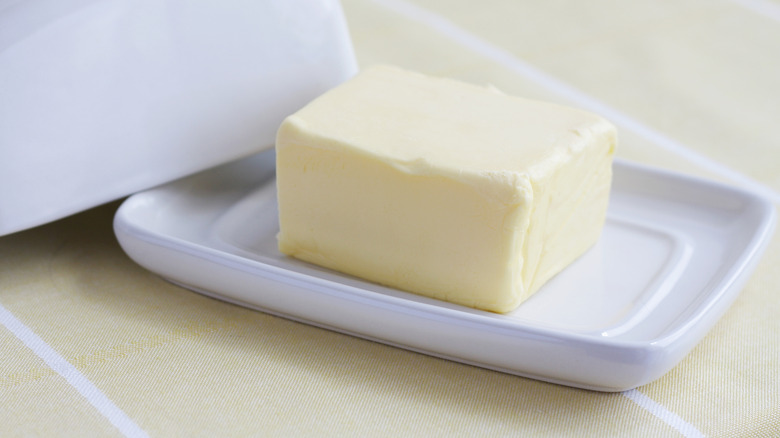The Worst Mistake You Can Make When Storing Butter
Butter makes everything better, right? It's hard to deny that this rich, high-fat ingredient adds a little something extra to almost any recipe, whether it's salted caramel white chocolate chip cookies or a perfectly-seared steak. But ice-cold butter that's kept in the refrigerator is usually difficult to work with, which is why most recipes call for properly softened butter. The easiest way to achieve this is to leave it on the counter, but the worst mistake you can make when storing your butter is exposing it to too much light.
In the refrigerator, butter is kept in a dark, cold place. But that all changes when it's out on the counter, where it's exposed to plenty of light between kitchen light fixtures and natural sunlight. The good news is that butter is perfectly safe when left at room temperature due to its high fat and low water content. The bad news is that exposure to light can increase how quickly the butter's fat decomposes and also its oxidation rate — both of which mean your butter will go bad sooner.
How to properly store butter at room temperature
Light is tricky, and when it makes contact with the fat and water in butter, it creates a reaction that causes the butter to lose its quality and flavor. Although butter doesn't technically become unsafe to eat when on the counter, its flavor begins to deteriorate the longer it sits there.
The easiest way to ensure you get the best of both worlds here — room temperature butter that maintains its high quality — is to store butter in an opaque dish where it can be fully enclosed. This minimizes light exposure but still lets you enjoy this easily spreadable, salty ingredient. One thing you want to avoid is storing butter in a metal container. Due to the composition of most metals, this storage method will also speed up butter's oxidation process, rendering it sub-par pretty quickly. A porcelain butter dish or an airtight, dark container is the best option.

